
 Search Here
Search Here
MISC
Parts List
Robot Forum
Chat
Member Pages
Axon MCU
Robot Books
Shop
Contact
SKILLS
How To Build
A Robot
Tutorial
Calculators
Mechanics
Programming
Miscellaneous
Robots
Space
HARDWARE
Actuators
Batteries
Electronics
Materials
Microcontrollers
Sensors
SCIENCE
Robot Journals
Robot Theory
Conferences
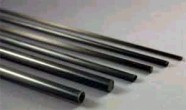
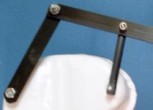
Carbon fiber is a relatively new material to robotics. However, it has already become a very important material, making new robots possible that were not possible before.
Strength
Carbon fiber has a very high strength to weight ratio, meaning that for
another material of the same weight, it is likely to be much stronger.
But carbon fiber is a fibrous material, meaning that the fibers
are all aligned in a single direction. This can affect strength if used
improperly.
Because the fibers are aligned, carbon fiber has different strength amounts - depending on the direction that force is applied at. For example, rope is very strong if you pull, but very weak if you push. Carbon fiber is very strong in both compression and tension, but is much weaker in bending (force from the side). It is like trying to break a stick - breaking it at the center is much easier than by pulling it from the sides. So when using carbon fiber, make sure all force is only applied longitudinally.
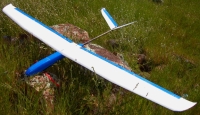
Weight
Carbon fiber is extremely lightweight for its strength - this is why
it is now very common now in hobby RC aircraft and micro-air robots. Some
micro-air robot craft were not even possible before carbon fiber!
Before it became popular, balsa wood
was the prevailing lightweight structural support material. If you are currently
using balsa, you should probably switch.
Really an amazing material. I used to do research for the
CMU NanoRobotics Laboratory
and carbon fiber outperformed all other materials for my microrobotic applications.
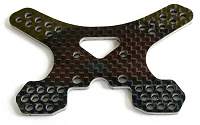
Other Applications for Carbon Fiber
Carbon fiber is sold in various very affordable shapes: round tubes, square tubes, flat sheets,
retangular bars, and a few others. Tubing is usually used for
structural support. The flat sheets are used for ant weight battle bot armor and other
chassis covering. I have use rectangular carbon fiber bars to make 4-bar linkages
(shown in the image at the top of this page). The shape you use will be dependent on how
you expect the force to applied, amount of force, and your attachment method.
Carbon fiber has other useful properties as well. Since it is non-metallic, it can be used in applications where metal would interfere with sensors. Medical MRI's (magnetic resonance imaging) machines use very strong magnetic fields, preventing things like surgery robots to be used inside of them. But if you make the robot out of something non-magnetic, such as carbon fiber, that would no longer be a problem. Carbon fiber is already used to make backing boards to tie patients down for things like CAT scans and X-Rays. Why? CAT scan machines detect radiation emission from a radioactive isotope injected in to you. X-Ray machines detect radiation reflected back from you. Metal however attenuates (blocks) radiation, making the sensors useless. Why do you think Superman can't see through lead?
Working with Carbon Fiber
Working with carbon fiber is very easy. You can basically work with it the way you work
with wood. But being a fibrous material, you have to be very careful of splintering -
taking a little practice to master. There are several tools you should keep around for when you work with carbon
fiber. Remember, if you choose the wrong tools, your subjecting your carbon fiber to splintering.
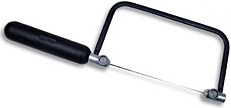
A Jewelers Saw can be bought at various jewelry and hobby stores. What makes it good
is that it is fine toothed and designed for precision cutting work. If you have a hacksaw
with a fine toothed blade that should work. The blade must be sharp and with no damage.

A pair of fine cutting snips for cutting is also highly recommended. These are good for cleaning up a saw cut that has a few remaining fibers that escaped your wrath. For the very thin rectangular carbon fiber, snips can be used instead of a jewelers' saw. Again, make sure this tool is extremely sharp.
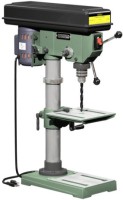
For drilling you can use normal drill bits. But if you just drill straight out without first preparing the carbon fiber you will quickly notice splintering and breaking at the drill point. I have tried taping over the area I want to drill to get reasonable results. But you probably also want to paint the area over with a plastic buffer (made from a cheap plastic putty) or soaking the area over in superglue (the running type that can soak in between the fibers) to prevent damage from the drill chuck.
Make sure your drill bit is really sharp (new bits or diamond tipped bits work best) because any roughness will pull at the fibers instead of cutting - hence causing damage. Make sure you drill slowly. After drilling, you want to file away any splintering with fine grain sandpaper and/or scotchbrite. Then coat the finished area with a layer of superglue and let dry. The superglue will hold the loose fibers together and prevent any future damage. Use this method of filing and glueing for when you cut/saw carbon fiber too.
Attaching Carbon Fiber
Attaching pieces of carbon fiber together (or to other materials) can be a little tricky.
For attaching sheets and plates it is somewhat easy.
You can drill a hole in each and bolt them together.
And/or use epoxy or fiberglass resin which you
can normally find in repair kits (such as for boats at boating supplies stores). Make
sure you work all the air bubbles out of the epoxy mix while it is drying (bubbles are weak spots).
For really serious bonds, try an epoxy called Plexus. I have not used it myself, but I hear it is good.
For attaching rods together it gets a little tricky. The bolting method using screws works.
There are also special plastic connectors sold at
various angles where you can just attach both ends of your carbon fiber rods together.
'Molding' with carbon fiber is somewhat complicated, and since I have never done it myself, I wont go into much detail. But basically you buy a bunch of paper thin sheets of it and glue it all together over a mold to become this cool looking custom shaped shell. You will have to do temperature control and layering and all this other complex stuff. Will probably make an interesting alternative to the advantages of vacuum forming if you are willing to attempt it.
Safety
I am actually shocked at how little safety has been paid attention to online for carbon fiber. A
Google search for carbon fiber safety tips yielded zero useful results for me. I am no expert on carbon fiber
safety, so I will just go through the common sense stuff. So first, lets talk about the dangers
of carbon fiber. Carbon fiber is exactly what the name suggests, extremely thin strong fibers.
Basically light weight needles capable of jabbing into your skin or worse - capable of becoming airborne
and jabbing into your lungs and eyes, etc. Coughed up blood, anyone? You get the idea.
Apparently some people are even allergic to some degree and get skin reactions from it. "It's a skin reaction that looks like a really bad sun burn and itches like a mother." If you plan to saw or drill carbon fiber, expect copious amounts of fine particles to become airborne.

Now protection for carbon fiber should be obvious for you. Above anything else you want a basic $1 face mask for breathing. Probably you want to do this outside with air flow as well. This has been sufficient for me to work with it. But if you require more, like if you are allergic to it, then eye protection goggles, and even a Tyvek suit (such as for HAZMAT stuff, shown in the above image) will work.
Additional Carbon Fiber Notes
UV light can and will break down carbon fiber over time.
UV top coat is advised, and gives the parts that nice shiney finish.

Carbon fiber tape looks neat, but I just have not found a use for it yet. Maybe for wings?
Society of Robots copyright 2005-2014